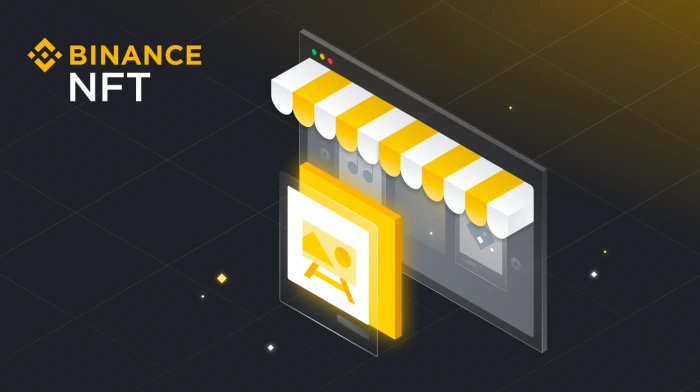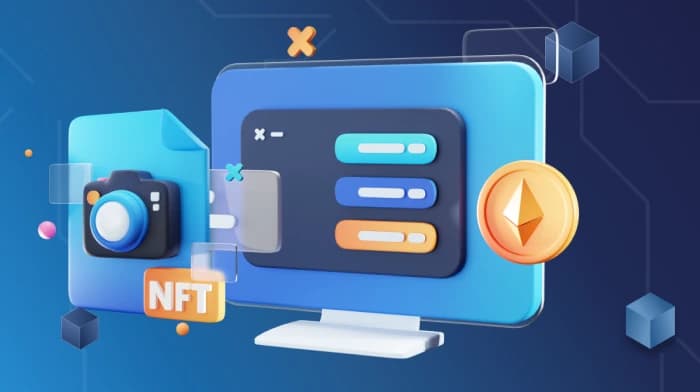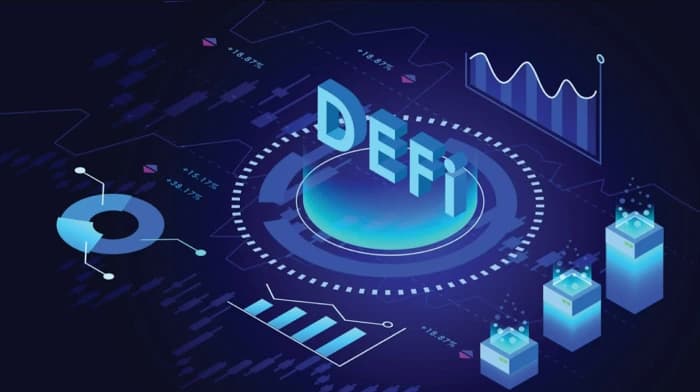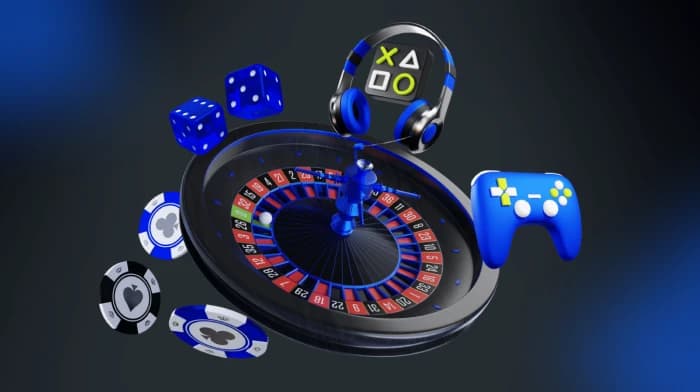
Introduction
Building an NFT marketplace similar to Binance involves key steps. First, it's essential to understand the elements that make a platform like Binance successful. What features set it apart? How can these be replicated? From the ground up, creating a foundation for your marketplace is crucial, covering everything from the user interface to the underlying blockchain technology.
The Rise of NFTs and Digital Ownership
The world of cryptocurrency and blockchain has been on a wild ride lately, with growth and innovation happening at a breakneck pace. One of the most exciting developments to emerge from this scene is the rise of NFTs or Non-Fungible Tokens. They're completely changing the way we think about owning something digital and what makes it authentic. It's opened up a new frontier for creatives, artists, and people looking to invest in something truly one of a kind.
Binance, being a major player in the cryptocurrency exchange world, was quick to catch on to the potential of NFTs. They went on to launch their own NFT marketplace, which has been a huge success. If you're looking to follow in their footsteps, this guide will take you by the hand and lead you through the steps to building an NFT marketplace that's somewhat similar to what Binance has put together.
What's All the Fuss About NFTs?
Non-Fungible Tokens or NFTs are one-of-a-kind digital assets that prove who owns something and if it's genuine. This could be a digital item or a physical one. What sets NFTs apart from things like Bitcoin or Ethereum is that those are basically interchangeable. If you have one Bitcoin, it's just like any other. NFTs, on the other hand, have their own unique traits that make them distinct, so you can't just swap one out for another.
These digital certificates are a revolutionary way to prove you own something online. They can be used for all sorts of things:
- Digital artwork and illustrations
- Audio files - podcasts, soundtracks, and music
- Virtual real estate - digital property in metaverse environments
- Sports memorabilia - collectible items like signed jerseys or balls
- Gaming assets - in-game items and collectibles
Understanding the Binance NFT Marketplace
Binance's NFT marketplace is built on the Binance Smart Chain, a blockchain network that's compatible with the Ethereum Virtual Machine. This means the platform can handle all sorts of NFTs while taking advantage of the Binance Smart Chain's high performance.
The marketplace started out pretty exclusive, catering mainly to big names in the industry. It used the Binance Smart Chain, which is really fast and secure and doesn't break the bank. This made it an appealing place for people to buy and sell NFTs.
Key Benefits of Binance NFT Marketplace
- High transaction throughput - can handle over 1.4 million transactions per second
- Strong security record and solid protocols are in place
- Competitive pricing when paying with either BUSD or BNB tokens
- Access to Binance's user base and the whole ecosystem that comes with it
Step-by-Step Guide to Building Your NFT Marketplace
Building a platform like Binance's NFT marketplace involves several critical steps. To get started, a solid understanding of the core components is necessary.
1. Define Your Niche and Unique Value Proposition
To get started, it's crucial to have a clear grasp of where you fit in the market. This means figuring out who your ideal customers are and what sets you apart from the competition. One approach might be to focus on creating specific types of content, like a particular genre or format, which can help you stand out.
Some examples of content types to consider specializing in include:
- Digital art - computer-generated images and animation
- Audio content - music and movies
- Virtual real estate and metaverse assets
- Sports and gaming collectibles
What sets your platform apart is its unique selling proposition. This is what will make it stand out from other marketplaces. By having something special to offer, you can draw in both the people who create things and those who want to collect them, bringing them all together in your ecosystem.
2. Legal Compliance and Regulatory Requirements
Compliance with laws and regulations is essential. Dealing with the rules and regulations around cryptocurrencies and NFTs can be pretty overwhelming. To avoid any issues, it's crucial to make sure you're complying with all the laws where you operate.
Key considerations include:
- Securities regulations and how tokens are classified
- Anti-money laundering requirements
- Know Your Customer (KYC) procedures
- Data protection and privacy laws
- Intellectual property rights
To deal with these requirements, it's a good idea to get a lawyer who knows what they're doing. They can help set up the systems to make sure everything is done by the book.
Development Team and Technical Setup
3. Build Your Development Team
To get a project off the ground, you need a team with a diverse range of skills. This means bringing together developers who are experts in different areas so they can tackle different aspects of the project.
Technical Team:
- Blockchain developers
- Smart contract specialists
- Frontend and backend developers
- DevOps engineers
- Security auditors
Business Team:
- Legal experts
- Marketing professionals
- UI/UX designers
- Project managers
- Community managers
4. Choose Your Blockchain Platform
Deciding on a blockchain platform is a crucial step. When it comes down to it, there are many options to consider. The choice of platform can make or break a project, so it's essential to get it right.
Popular choices include:
- Ethereum - has the most established ecosystem, but comes with higher gas fees
- Binance Smart Chain - known for low fees and faster transaction times
- Polygon - a layer 2 solution designed to be scalable
- Solana - stands out for its ability to handle a high number of transactions while keeping costs low
When deciding, think about factors like transaction costs, speed, available developer tools, and existing user adoption.
5. Smart Contract Development
To make your platform work smoothly, create smart contracts that cover every aspect of NFT transactions. These should handle:
- NFT minting - creating unique digital assets
- Ownership transfers and trading
- Royalty distributions to creators
- Marketplace fees
- Auction mechanisms
Securing smart contracts is a top priority. To prevent costly mistakes, it's essential to put them through thorough testing and have them reviewed by experienced auditors before they go live.
Core Platform Features Development
6. User Registration and Authentication
Create comprehensive user management systems with features including:
- Secure account creation and login
- Multi-factor authentication
- KYC verification procedures
- User profile management
- Account recovery mechanisms
7. Wallet Integration
To make it easy for people to store and trade NFTs, it's vital that their wallets can connect smoothly. Support various wallet types:
- MetaMask
- Trust Wallet
- WalletConnect
- Custom wallet solutions
Ensure smooth functionality across both desktop and mobile devices for the best user experience.
8. NFT Minting and Listing
Make it easy for people to create and sell NFTs by designing intuitive tools for minting and listing:
- Simple asset upload interface
- Metadata management and storage
- Rarity and attribute definitions
- Batch minting capabilities
- Preview and verification tools
9. Marketplace Features
To compete effectively, you need a marketplace with comprehensive features:
Core Features:
- Search and filtering capabilities
- Category browsing
- Auction and fixed-price sales
- Bid management systems
- Creator royalty systems
- User profiles and social features
- Transaction history and analytics
Advanced Features:
- Community forums and social tools
- Creator verification programs
- Featured collections and promotions
- Price tracking and market analytics
10. Security and Scalability
To start with a solid foundation, implementing robust security measures is crucial, as well as finding solutions that allow for growth and expansion.
Security Measures:
- Regular smart contract audits
- Proper key management
- DDoS protection
- Data encryption
- Access controls and monitoring
Scalability Solutions:
- Load balancing and caching
- Database optimization
- CDN integration
- Microservices architecture
11. Payment Integration
The system needs to handle various payment methods including:
- Native blockchain tokens
- Major cryptocurrencies like Bitcoin and Ethereum
- Platform-specific tokens
- Stablecoin payments
- Fiat gateway integration
12. Marketing and Promotion
To bring in users, you need to develop a comprehensive marketing strategy covering:
- Digital advertising campaigns
- Social media engagement
- Influencer partnerships
- Creator collaboration programs
- Community events and contests
- Public relations and media outreach
13. Continuous Development and Updates
To stay competitive, the platform needs regular updates and improvements:
- New feature additions
- User feedback implementation
- Security improvements
- Performance optimizations
- Additional blockchain integrations
Binance NFT Marketplace Clone Script Option
A clone script gives developers a head start by replicating the core features of Binance's NFT marketplace. Essentially, it's a shortcut that lets entrepreneurs get their product to market faster while still offering users a familiar experience.
For companies looking to break into the NFT market, clone scripts can be a smart move. They offer a cost-effective approach, which is especially helpful when you don't have a lot of time to spare on development.
Key Features of a Quality Clone Script
User Interface:
- Intuitive and responsive design
- Mobile optimization
- Easy navigation and search
- Professional visual presentation
NFT Management:
- Simple minting process
- Flexible listing options
- Metadata management
- Asset storage integration
Trading and Commerce:
- Auction and fixed-price sales
- Secure payment processing
- Multi-cryptocurrency support
- Transaction fee management
Smart Contract Integration:
- Audited contract code
- Automated ownership transfers
- Royalty distribution systems
- Asset security protocols
Community Features:
- User profiles
- Creator verification systems
- Social interaction tools
- Community discussion spaces
Security:
- Tested security protocols
- Data protection measures
- Backup and recovery systems
- Performance optimization
Benefits of Using a Clone Script
Time Efficiency:
- Faster development and quicker time to market
- Competitive advantage through rapid deployment
Cost Effectiveness:
- Lower development costs compared to building from scratch
Proven Reliability:
- Tested and optimized scripts minimize bugs and issues
- Stable platform performance
User Familiarity:
- Binance-like interface that users already understand
- Easier user adoption
Customization and Innovation
Clone scripts can be a starting point, but to really stand out in a crowded market, you need to make the platform your own. Successful customization involves:
- Brand identity integration
- Unique feature development
- Market-specific adaptations
- Community-focused enhancements
Conclusion
Building a platform like Binance's NFT marketplace is a major undertaking. It demands a solid plan, serious technical know-how, and a deep commitment to keeping users safe and happy. It's a challenging road, but the payoff could be huge. NFTs are becoming more popular by the day, and it seems like they're here to stay.
To really make it in this area, a few key things need to come together:
- Clear market positioning and unique value proposition
- Solid technical foundations with strong security focus
- Comprehensive legal compliance
- Effective marketing and community building
- Continuous platform improvement
The NFT marketplace industry is full of potential for entrepreneurs and businesses that are willing to put in the time and effort to develop a winning strategy. To really make a mark, it's crucial to stay focused on what users need and keep an eye on market trends. That way, it's possible to create a platform that genuinely adds value to the growing NFT ecosystem.


